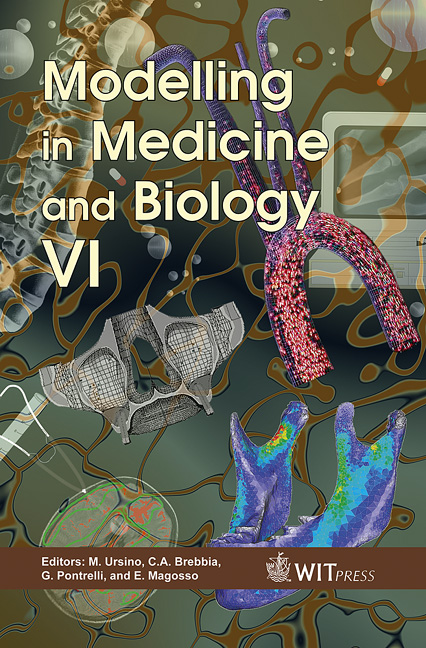Numerical Simulation Of Hemolysis: A Comparison Of Lagrangian And Eulerian Modelling
Price
Free (open access)
Transaction
Volume
8
Pages
10
Published
2005
Size
1,101 kb
Paper DOI
10.2495/BIO050351
Copyright
WIT Press
Author(s)
S. Pirker, H. Schima & M. Stoiber
Abstract
In rotary blood pumps the degree of hemolysis is of crucial importance. Therefore, it would be desirable to account for flow induced hemolysis by means of numerical simulations in an early design stage. In this paper two numerical simulation methods for the simulation of hemolysis are proposed. Hereby, a Lagrangian approach based on tracking distinct erythrocytes is compared to an Eulerian approach in which the erythrocytes are treated as a continuous species. Both models account for the local instantaneous stress as well as the stress exposure time. The basic functionality and consistency of the above models is shown by simple test geometry. In a second step the Eulerian method is applied for the simulation of unsteady hemolysis in a rotary blood pump. Keywords: CFD-simulation, rotary blood pump, hemolysis, Lagrangian modelling, Eulerian modelling, unsteady hemolysis. 1 Introduction In recent years numerical flow simulations (CFD) have proven to be a valuable tool in designing artificial organs, i.e. rotary blood pumps (e.g. [1-3]. On one hand classical design criteria like pumping efficiency, pressure head and hydraulic losses can be addressed. One the other side flow induced hemolysis can be investigated. In this paper two mathematical methods, namely the Lagrangian and the Eulerian approach, for the simulation of hemolysis are introduced and compared to each other. The principal functionality of the models is shown by a simple
Keywords
CFD-simulation, rotary blood pump, hemolysis, Lagrangian modelling, Eulerian modelling, unsteady hemolysis.





